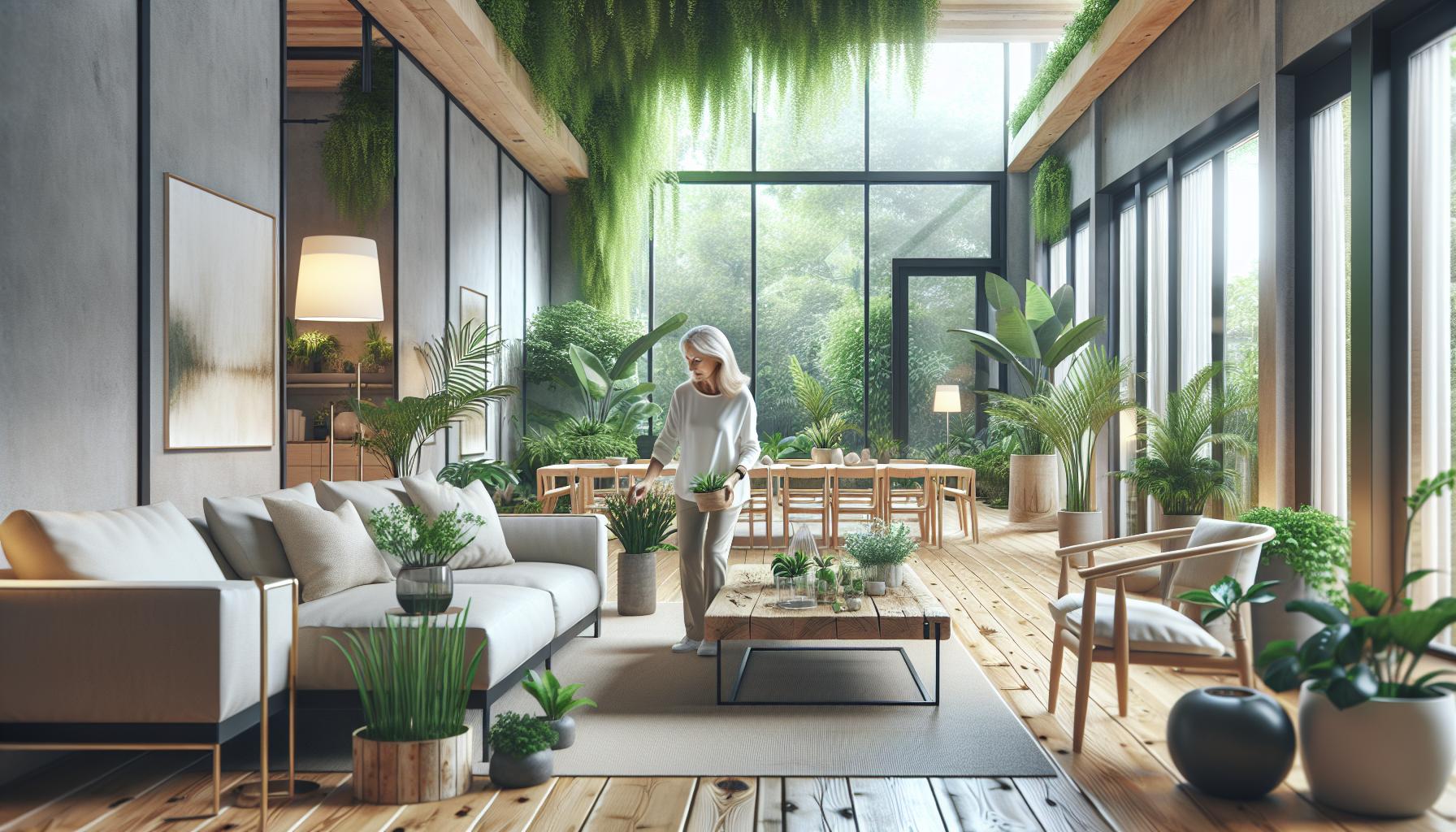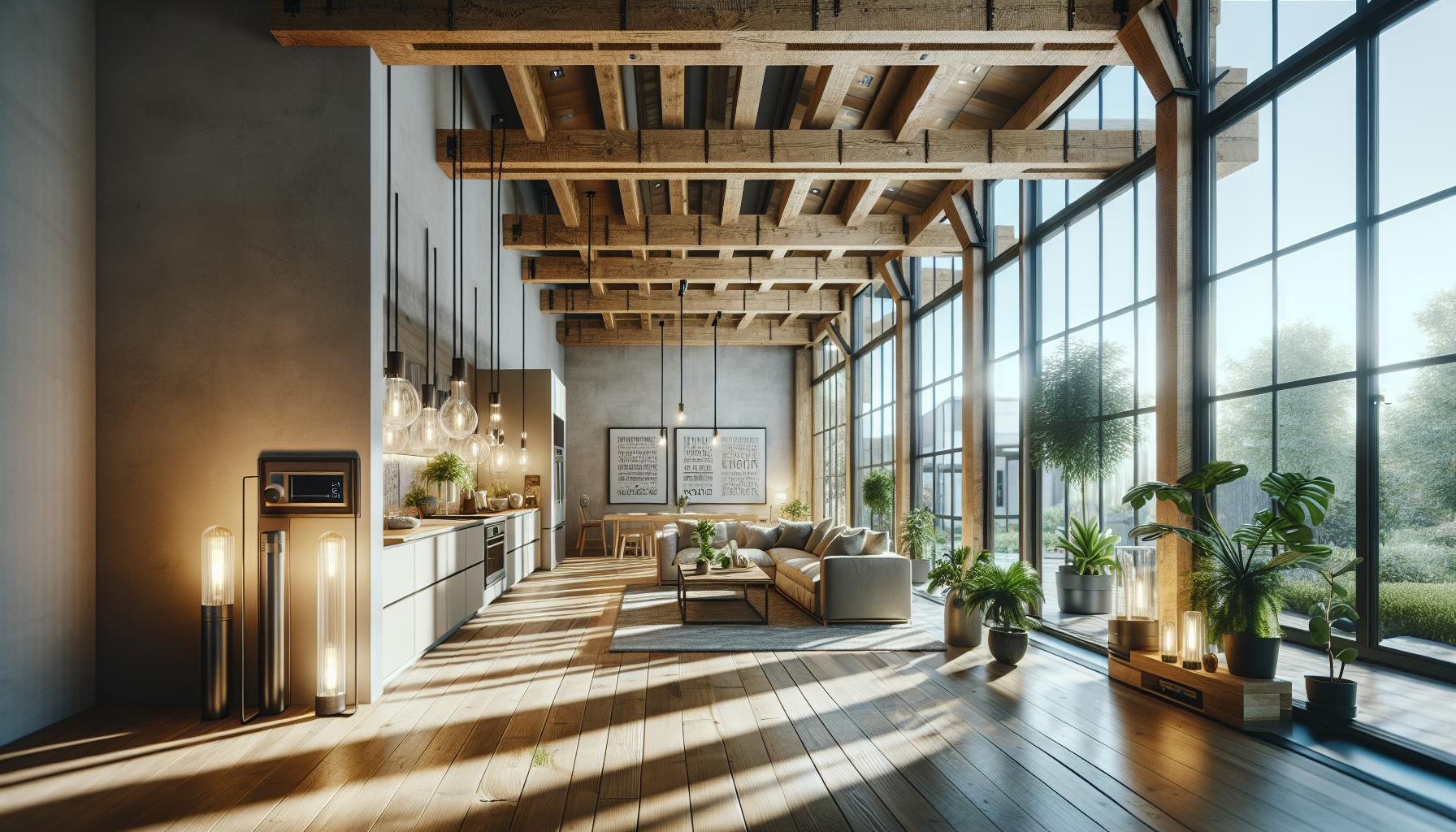When it comes to home renovation, sustainability is more than just a buzzword—it’s a lifestyle choice that can transform our living spaces and the planet. I’ve always believed that a home should reflect not just personal style but also a commitment to environmental responsibility. Sustainable home renovation offers a way to achieve this by integrating eco-friendly materials and energy-efficient systems.
In today’s world, where climate change is a pressing issue, making conscious choices in our homes can have a significant impact. From selecting recycled materials to installing solar panels, sustainable renovation practices not only reduce our carbon footprint but also enhance the home’s value and comfort. As I explore this topic, I’ll share insights and tips on how to embark on a renovation journey that’s both beautiful and sustainable. Let’s dive into the world of eco-conscious home improvements and discover how small changes can make a big difference.
- Sustainable home renovation involves using eco-friendly materials and energy-efficient systems, reducing environmental impact and enhancing home value.
- Key strategies include improving energy efficiency through better insulation, LED lighting, and smart appliances, leading to lower utility bills and carbon footprint.
- Water conservation measures, such as low-flow fixtures and rainwater harvesting, play a significant role in sustainable renovation.
- Prioritizing indoor air quality with low-VOC paints and proper ventilation ensures a healthier living environment.
- Successful sustainable renovations balance aesthetics and functionality while utilizing reclaimed materials to minimize waste.
Sustainable Home Renovation
Sustainable home renovation focuses on enhancing living spaces by minimizing environmental impact. Renovations incorporate eco-friendly materials, energy-efficient systems, and sustainable design principles. By using renewable or recycled resources, I ensure the longevity and sustainability of the materials in my renovation projects. For instance, bamboo flooring, which grows rapidly, emerges as a popular choice for eco-conscious renovations.
Energy efficiency involves improving insulation, installing energy-saving appliances, and utilizing LED lighting. These upgrades reduce energy consumption, cutting utility bills and contributing to a greener planet. When planning renovations, I consider local climate, orientation, and natural lighting to optimize energy use.
Water conservation is crucial in sustainable home renovation. By installing low-flow faucets, dual-flush toilets, and efficient irrigation systems, I minimize water usage without compromising comfort. Additionally, collecting rainwater for garden use reflects a simple yet effective conservation strategy.
Indoor air quality significantly impacts health and well-being. To maintain a healthy home environment, I select low-VOC paints and finishes, ensuring cleaner indoor air. Proper ventilation and natural light also create a pleasant and sustainable living space.
Finally, waste reduction remains a key element. Reusing and repurposing existing materials not only lessens landfill contributions but also preserves the unique character of a home. Sustainable renovations prioritize functionality and efficiency while respecting the planet’s resources.

Key Benefits of Sustainable Home Renovation
Sustainable home renovation isn’t just beneficial for the environment—it’s advantageous for your wallet and well-being.
Environmental Impact
Renovating sustainably significantly reduces carbon emissions. Using reclaimed wood, recycled tiles, and other eco-friendly materials minimizes the need for new resource extraction. Installing solar panels and energy-efficient fixtures helps decrease reliance on non-renewable energy sources, promoting a healthier planet.
Cost Savings
Though some sustainable materials may have a higher upfront cost, they often lead to long-term savings. Energy-efficient appliances and improved insulation lower utility bills by reducing energy consumption. Retrofitting with LED lighting and smart home systems further contributes to economic savings over time.
Healthier Living Environment
Sustainable renovations improve indoor air quality through low-VOC paints and natural ventilation solutions. These choices reduce exposure to harmful chemicals, promoting a healthier indoor atmosphere. By incorporating sustainable elements, you create a living space that’s not only eco-friendly but also health-supportive.

Planning Your Sustainable Renovation
Embarking on a sustainable home renovation requires careful planning to ensure it aligns with eco-friendly practices. Setting clear goals and budgeting effectively plays a vital role in achieving a successful green transformation.
Setting Sustainable Goals
Establish concrete goals reflecting your commitment to sustainability. Consider aspects such as using renewable materials like bamboo or recycled steel and improving energy efficiency with smart home technologies. Aim to enhance water conservation by incorporating low-flow systems and rainwater harvesting setups. Prioritize improving indoor air quality through eco-friendly paints and ensuring proper ventilation systems. Specify targets for waste reduction by reusing or repurposing existing materials. These goals will guide the decision-making process throughout the renovation.
Budgeting for Sustainability
Allocate funds strategically to accommodate sustainable choices. While some eco-friendly materials might initially cost more, their long-term benefits often include reduced utility expenses. Research and plan for potential tax credits or incentives for sustainable upgrades such as solar panels or energy-efficient appliances. Assess the lifecycle costs of materials and systems to understand their financial and environmental impact over time. Set aside a contingency fund to address unexpected changes or upgrades during the renovation process. Making informed financial decisions guarantees the sustainability of both the renovation and your budget.

Sustainable Materials and Techniques
When embarking on a home renovation project, selecting sustainable materials and techniques proves essential. By integrating eco-friendly practices, I improve my living space while minimizing environmental impact.
Eco-friendly Building Materials
Choosing eco-friendly building materials significantly reduces the environmental footprint of a renovation. Reclaimed wood stands as a popular option, offering a unique aesthetic while preserving natural resources. Bamboo is another excellent choice, as it grows rapidly and boasts incredible durability. Recycled metal, often used in roofing or fixtures, contributes to sustainability by reducing the demand for new raw materials. Low-VOC paints and finishes minimize toxic emissions, ensuring a healthier indoor environment. These materials better align a renovation project with eco-centric values, reducing overall environmental strain.
Energy-efficient Solutions
Incorporating energy-efficient solutions serves as a cornerstone of sustainable renovation. Installing high-performance windows and doors enhances insulation, preventing unnecessary energy loss. Smart thermostats offer precise climate control, optimizing energy usage according to daily patterns. Utilizing energy-efficient appliances reduces electricity consumption, lowering utility bills and conserving resources. Solar panels, when feasible, provide a renewable energy source, directly cutting down on reliance on fossil fuels. Applying these solutions not only supports the environment but also yields financial savings through reduced energy use.

Challenges and Considerations
Renovating sustainably comes with its own set of challenges and considerations to navigate successfully.
Finding Sustainable Contractors
Locating contractors who prioritize sustainability can prove challenging. I focus on verifying their experience with green building practices before making a decision. Assessing credentials like LEED certification helps ensure their commitment to eco-friendly construction. Research peer reviews from past clients for insights into the contractor’s dedication to sustainable methods. Checking for partnerships with suppliers of eco-friendly materials can further reveal their expertise.
Balancing Aesthetics and Sustainability
Achieving a visually appealing yet sustainable renovation requires strategic planning. I choose materials that offer both beauty and ecological benefits. For instance, use reclaimed wood and bamboo provides an aesthetic edge while supporting environmental goals. Prioritizing energy-efficient designs like high-performance windows integrates style with sustainability. Consider these choices within the framework of the home’s existing character to ensure a seamless blend.
Successful Renovation Case Studies
In reviewing notable sustainable home renovations, practical applications of eco-friendly strategies are evident. I examined several projects where owners transformed their spaces using sustainable materials and energy-efficient solutions.
- Historic Home in Seattle: This 1920s home saw a remarkable transformation focusing on energy efficiency and preserving historical integrity. The owners installed double-glazed windows and upgraded to Energy Star appliances. Reclaimed wood featured prominently, offering a historical touch while minimizing material waste. Solar panels were discretely added to the roof, significantly reducing energy bills.
- Modern Urban Loft in New York City: A loft renovation incorporated cutting-edge sustainable design with recycled metal fixtures and bamboo flooring. The introduction of natural light through strategically placed skylights reduced electricity usage. Water-efficient fixtures, such as dual-flush toilets and low-flow showerheads, contributed to conservation efforts.
- Family Home in Austin: A Texas family opted for net-zero energy consumption by installing high-performance insulation and a solar panel system. The renovation included a rainwater harvesting system for garden irrigation. Inside, low-VOC paints improved air quality, creating a healthier environment for their children.
These case studies underscore the diverse methods and materials available for sustainable renovation. By integrating both traditional and innovative solutions, these projects not only achieved environmental goals but also enhanced the homes’ aesthetic and functional value.
Sustainable home renovation is more than just an eco-friendly choice; it’s a meaningful investment in our planet’s future and our well-being. By embracing renewable materials and energy-efficient technologies, we can significantly reduce our environmental impact while enhancing our home’s value and comfort. The journey might present challenges, like finding the right contractor or balancing aesthetics with sustainability, but the rewards are substantial. Successful case studies show that with thoughtful planning and commitment, we can create beautiful, sustainable living spaces that reflect our dedication to a healthier planet. Let’s take these insights and turn our renovation dreams into reality.



